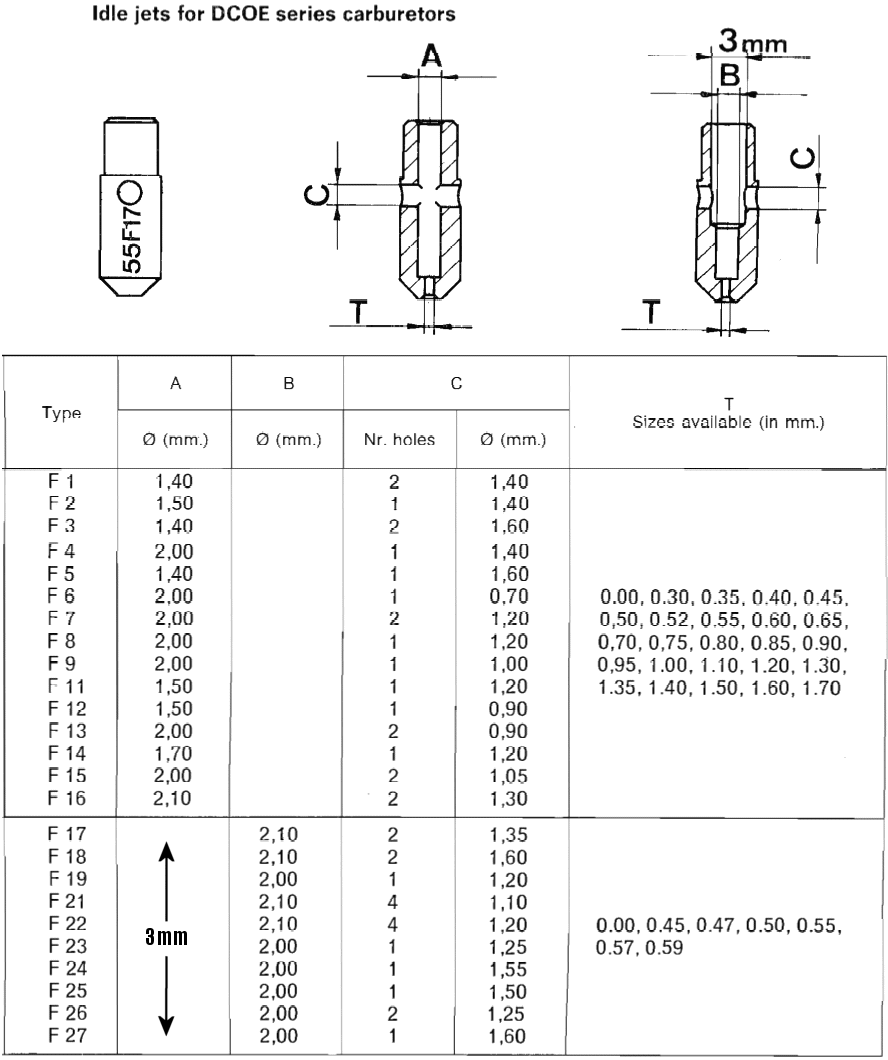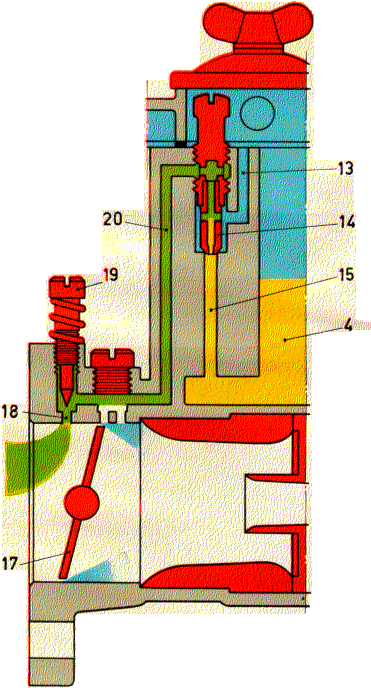I believe the thread is the same as a spark plug, if so a chaser should be easy to find.
In reply to porschenut :
Chasers are easy to find because O2s are more likely to need to be chased than spark plugs.
I've seen double ended spark plug chasers but 18x1.5 chasers specifically for O2s are even easier to find.
OK, progress. Threads chased and the sensor now threads properly. Wiring was relatively easy. I drilled a hole in the firewall to run the sensor wires in (properly grommeted and well out of the way in the passenger's footwell), and pulled power and ground from the radio. The gauge is set up where the ashtray normally lives; I haven't decided if it will stay in the car all the time, or if I'm just going to tune it and then take it out, hence the temporary mounting.
Drove the car for about 10 minutes just to make sure everything was working. The numbers change a lot and very quickly, so there's some interpolation necessary. I support this might be due to the fact that I'm fairly close to where the header tubes dump into the collector, or maybe it's just the way it is with carbs. Based on the chart that came with the kit, it looks like I'm a little rich at idle and cruise (~12.5-13 at 3.5kRPM steady), and lean at WOT (~13.5-14 at 4kRPM). I did not have the time or opportunity to do any runs into the higher RPM range to see what happens there. Once I have a little more data, I'll start tinkering with jets.
In threads like this, I like to ask, "what do the manufacturer's instructions say?", mostly to see if the OP did so first before asking anonymous strangers.
In reply to kb58 :
Say about what? FWIW, the included instructions were perfunctory at best, but I found a more useful version on the AEM website.
If you have a leaky header gasket (common), the bouncing could be the effects of the leak.
Or you could just be witnessing the variability of the intake manifold, which is also common with anything that has a plenum, and why "turtle plates" were available for some common aftermarket V8 manifolds, and why porters who could port the plenums to equalize fuel distribution were seen as gods.
Rich under cruise and leaning out at WOT are not uncommon with the usual four-barrels on V8s. I think the rich under cruise is an artifact of making the engine happy with irregular fuel distribution, and possibly a side of increasing throttle response. The first time I had a wideband on a V8 I tried to make the numbers more "EFI like" but that turned into a rabbit hole and a tar patch so I eventually just made the engine happier at WOT and let the cruise numbers be whatever the engine felt happy with.
Yes, I'm assuming that you have a single carb on your engine and not sidedrafts.
In reply to Pete. (l33t FS) :
Sidedrafts. Weber 40DCOEs. It's possible there is a leak in the exhaust, either at the manifold gasket or the collector to the midpipe - nothing obvious, but I've never really looked all that closely. I did just have the header out to weld in the bung, and I tried to get everything sealed as best I could, but that doesn't guarantee anything.
In reply to NOHOME :
Yes, the instructions made that clear. The gasket and sealing surfaces are in very good shape (I checked them over when I had the header out), but there's certainly the possibility of one or more leaks. Is it advisable to use some sort of sealant there? I've never done so before, but obviously this is a new situation that may demand more perfect sealing.
I've only ever used widebands on EFI cars, never with a carb. That said, I've never really felt that the gauge showing a numeric display was all that useful for tuning without something to log both RPM and AFR for later review. The bare minimum way of doing this is to have a passenger shoot a video that can see both the tach and the AFR gauge at the same time while doing an acceleration run.
I usually give the gasket a thin smear of high temp silicone (gold/orange) on both sides for peace of mind. Also look at all of the welds for evidence of pinhole leaks.
In reply to 02Pilot :
For header-to-head flanges, I swear by remflex gaskets and ramplock header bolts on a manifold flange that I have verified to be flat. As much as I detest using safety-wire on nuts and bolts, exhaust headers are one application where they might make sense.
I also pressure test the exhaust with soapy water and smoke test the intake because rule 1 of any EFI troubleshooting is to be absolutely positive not to have intake or exhaust leaks. I learned this the hard way playing with Fitech EFI.
I spent the morning fiddling with the carb jetting and test-driving. I've got the idle and WOT in the ballpark (14.5 and 12.5 rising to 13 at 6.5k RPM, respectively), but no matter what I change, light throttle cruise at 3-3.5k RPM is rich. I saw as bad as 10:1, and as good as 12.5:1. I think I'm going to have to order some leaner idle jets (50F8s now, probably try 50F2 and 55F2 or 50F11).
Current setup is 125 mains, 200 air correctors, F11 emulsion tubes, 50F8 idle jets. These are 40DCOEs with 34mm chokes.

More fiddling while I wait for new jets from the Czech Republic. I found that, despite setting the floats at the recommended levels, the fuel was a bit too high in the bowls, which can contribute to running rich at idle and cruise. Got that lowered to more or less the right level, and idle is now ~13.5. WOT pulls on the highway are right around 12.5, which is fine. The remaining problem area is light throttle cruise, which is still hovering around 11.0 or so. I don't think I can do more without leaner idle jets.
I will say it seems to be happier than I can recall it ever being in the past, which makes me think it's been pig rich for most of my ownership.
Larger idle air bleeds? Or might that screw up the transition to the mains at 3000ish...
Apples and potatoes, but my Nikki was great except at highway cruise, where it was crazy lean. Smaller primary air bleeds cured it without making the lower range rich.
In reply to Pete. (l33t FS) :
I've got 200s in there now - I don't think I have anything bigger. From what I understand, in DCOEs the air correctors don't really come into play until higher in the rev range (but I'm hardly confident in my understanding). The issue I have seems to be worse at lower RPMs, which as far as I can tell points to fuel level (which I think I've dealt with) or idle jets. The 50F8s are the leanest ones I've got; I have 50F2 and 55F2s coming.
Does the DCOE have idle air bleeds, though? Or is that fixed?
Playing with sidedrafts is on my bucket list, but my main carb experience is four barrel Holleys and Nikkis.
In reply to Pete. (l33t FS) :
Mine don't; I think some later ones might. Mine are old Italian models, so old that they have plugs pressed in over the progression holes, rather than the screw-in plugs on most DCOEs. The idle jets have air bleeds built into them.


Posting this for whatever it's worth. This is from a book by John Passini titled - wait for it - Weber Carburettors.

Granted, your engine is not a stock 1800, but this is at least something to think about.
40s seem awfully small for a warmed over two-liter. 45s or even 48s might be in order.
In reply to DarkMonohue :
Thanks. By any consistent standard, 40s would seem small, but in the 2002 world it's pretty well accepted that 45s are overkill for a street motor. Weber sidedrafts seem to demand some manner of witchcraft to figure out what variant works on what engine. On the chart you posted, for example, the different float levels are at least in part to compensate for the tilt of the engine and manifold.
You'll need to log in to post.